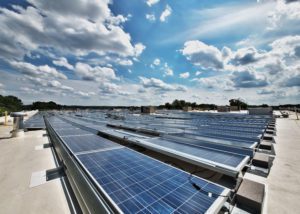This audio was created using Microsoft Azure Speech Services
Increasingly, electrical equipment is installed outdoors to be closer to users, applications and power supplies. Outdoor projects can be located almost anywhere and are exposed to different factors. In the first post in this series, I talked about the weather’s impact on an outdoor enclosure and how to benefit from such weather-related factors as the 4:1 difference in sunshine worldwide.
In the second post, I discussed installation constraints and gave some tips on how to handle them. (Hint: Pay attention to the electrical ground, cables and other infrastructure. For more tips, read the post.)
But there´s one more consideration to keep in mind. It’s people.
When it comes to people, outdoor enclosures fall into two categories, as shown in Figure 1. There are private facilities where access is tightly controlled. It might be in an airport, along a railway, or near a highway. But, what these have in common is that the public at large cannot readily get to the enclosure. If that’s the only type of facility you need to worry about, you can skip the rest of this post.

Everybody else has to work with outdoor enclosures in public spaces. Because people can get to the enclosure you have to worry about vandalism, theft, noise, looks, and safety. So, my first recommendation is to make the installation discrete. Completely hidden would be best, but that’s usually not possible.
As for my other recommendations, the first group deals with preventing unwanted acts from people who are intentionally trying to do something. So, the enclosure should have:
- A strengthened locking system equipped with 1242E key and padlock
- High protection (a IK10 rating) against for external mechanical impacts per EN 62262
- Different options for doors for instance plain is good but even better is a ribbed one with flyer-posting resistant surface
- Anti-vandalism resistance for shock, impact, torsion, and so on according to IEC 61439-5
Steps should also be taken to ensure the safety of those who aren’t trying to cause problems but instead just stumble into trouble. That can be a challenge because people have, over and over again, proven themselves ingenious at getting around safeguards.
Of course, you still have to try. So, the outdoor enclosure should provide:
- Fire resistance
- Strengthened insulation that meets a Class II certification
- Lower noise with levels less than 60 dB – about as loud as a conversation
- A pleasing appearance
For this last group, again a discrete installation is best and can be particularly helpful when it comes to aesthetics. After all, if the enclosure is effectively invisible, then its appearance doesn’t matter.
That concludes this three-part series. We’ve looked at the impact of the weather, the effect of installation constrains, and how to deal with people. For more information, there are a number of additional resources.
For examples of products meeting the requirements outlined above and in the other posts in this series, consult our Outdoor Heavy Duty Enclosures catalog. You can also watch a video on these products.
When it comes time to define the right solution for your project and to optimize its durability, you can turn to the Outdoor Technical Guide. It contains helpful guidelines and recommendations.
Finally, when making a selection of which product or modification is best for your situation, you can make use of our ProClima software. With it, you can explore possible solutions without having to actually build anything.



